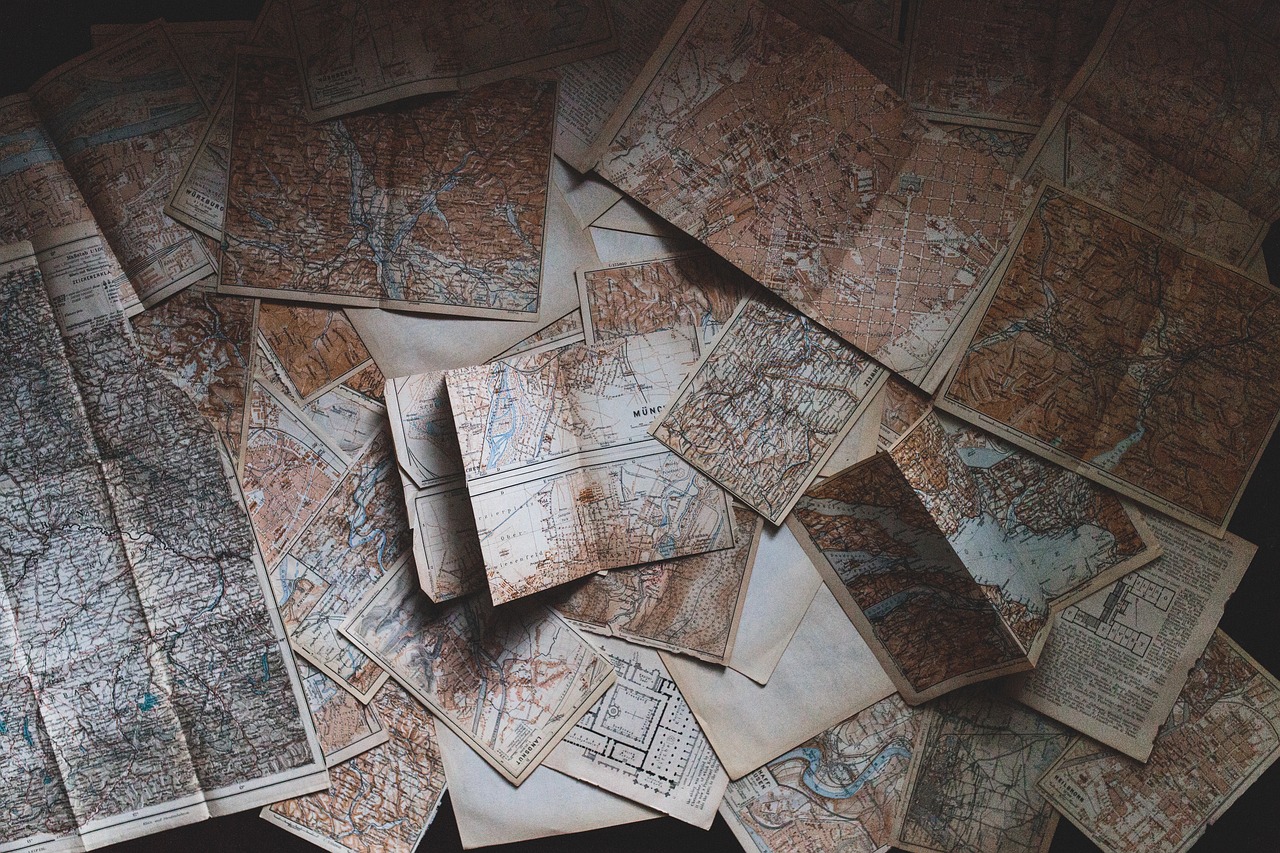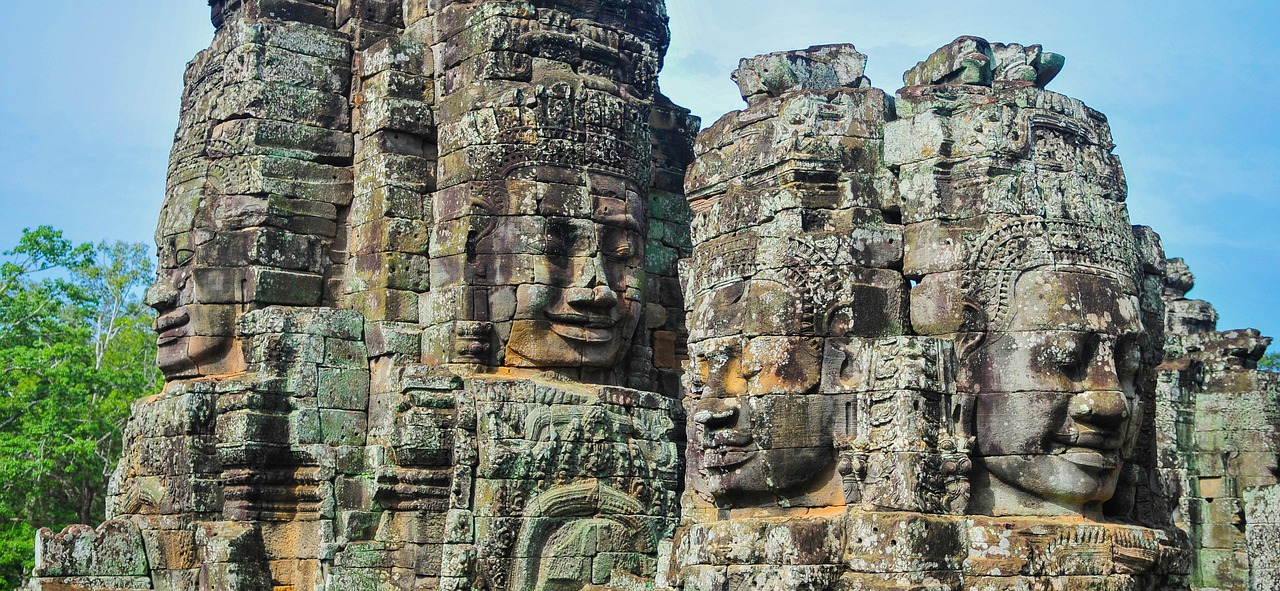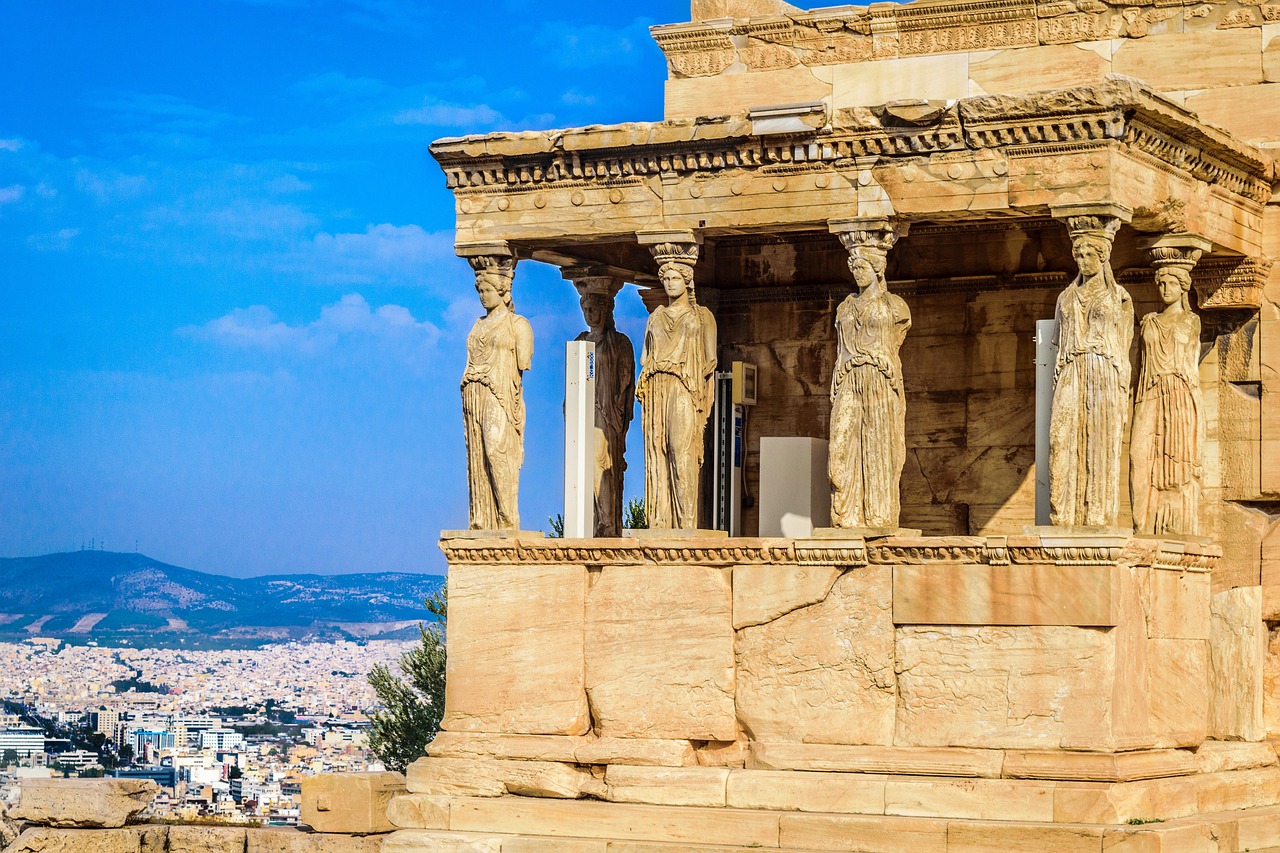The Secrets of Ancient Civilizations' Navigation Skills
Have you ever wondered how ancient civilizations managed to navigate vast seas and unknown lands with such precision and expertise? The secrets of their navigation skills reveal a fascinating world of advanced knowledge and ingenuity that continues to intrigue us to this day.
One of the most remarkable aspects of ancient navigation was the use of celestial bodies for guidance. Civilizations like the Polynesians and Egyptians mastered the art of astronomical navigation, relying on the positions and patterns of stars to traverse oceans and deserts with remarkable accuracy.
Furthermore, the cartographic innovations of civilizations such as the Greeks and Incas showcased their ability to create detailed and accurate maps of the world. These maps were essential for guiding travelers and explorers across unknown territories, highlighting the advanced cartography skills of ancient societies.
When it comes to maritime technologies, seafaring civilizations like the Phoenicians and Vikings were pioneers in shipbuilding and navigation. Their advanced techniques and tools allowed them to sail vast distances, exploring new lands and establishing trade routes that shaped the course of history.
Ancient cultures also excelled in landmark navigation, using natural features and environmental cues to navigate diverse terrains. The Native Americans and Aboriginal Australians, for example, honed their skills in reading the land to move with precision and efficiency, showcasing their deep connection to the environment.
The mystery of the Nazca Lines in Peru's Nazca Desert adds another layer of intrigue to ancient navigation methods. These massive geoglyphs raise questions about their purpose and possible connection to navigation, offering a glimpse into the sophisticated knowledge and practices of ancient civilizations.
Tracing the legacy of the Silk Road reveals the intricate network of trade routes that connected East and West. Ancient merchants and travelers navigated challenging terrains and diverse cultures along this historic path, exchanging goods and ideas that shaped the development of civilizations.
Exploring innovative waterway systems built by civilizations like the Maya and Chinese showcases their engineering prowess and strategic use of canals for transportation and navigation. These intricate systems facilitated trade and travel, demonstrating the advanced technological achievements of ancient societies.
Today, the navigation techniques of ancient civilizations continue to inspire modern-day explorers and researchers. By studying the past, we gain valuable insights into our planet's history and the ingenuity of those who came before us, shaping our understanding of the world around us.

Astronomical Navigation
Exploring the remarkable navigation techniques used by ancient civilizations to traverse the seas and lands, revealing their advanced knowledge of astronomy, cartography, and maritime technology.
Delving into how ancient civilizations like the Polynesians and Egyptians utilized celestial bodies to navigate vast oceans and deserts, showcasing their mastery of star positions and patterns.
Astronomical navigation was a pivotal skill for ancient civilizations venturing into the unknown expanses of the world. Imagine sailors gazing up at the night sky, using the stars as their guiding lights amidst the darkness of the open sea. The Polynesians, known for their incredible seafaring abilities, charted their course by studying the positions of celestial bodies, enabling them to navigate vast distances with astonishing accuracy. Similarly, the Egyptians, with their deep understanding of astronomy, aligned their monuments and temples with celestial events, showcasing their profound connection to the cosmos.
These ancient navigators were like celestial architects, mapping out their journeys based on the intricate dance of stars and planets above. By deciphering the movements of constellations and recognizing recurring patterns in the night sky, they unlocked the secrets of navigation that allowed them to traverse the oceans and deserts with confidence and precision.
Through their keen observations and meticulous record-keeping, these civilizations built a legacy of astronomical navigation that continues to inspire awe and admiration to this day. Their ability to harness the power of the stars for practical purposes speaks to the ingenuity and resourcefulness of ancient seafarers and explorers.

Cartographic Innovations
Exploring the remarkable navigation techniques used by ancient civilizations to traverse the seas and lands, revealing their advanced knowledge of astronomy, cartography, and maritime technology.
Delving into how ancient civilizations like the Greeks and Incas utilized cartographic innovations to create accurate representations of the world for navigation purposes. The Greeks, known for their meticulous mapping skills, developed early geographic knowledge that laid the foundation for modern cartography. Their maps, although not as precise as today's, showcased a remarkable understanding of the Earth's geography. Similarly, the Incas utilized intricate systems of recording geographic information to navigate their vast empire with precision. These cartographic innovations not only facilitated navigation but also contributed to the expansion and exploration of new territories.

Maritime Technologies
Exploring the remarkable navigation techniques used by ancient civilizations to traverse the seas and lands, revealing their advanced knowledge of astronomy, cartography, and maritime technology.
Delving into the realm of maritime technologies, we uncover the fascinating advancements in shipbuilding and navigation tools employed by seafaring civilizations such as the Phoenicians and Vikings. These ancient mariners were pioneers in developing innovative techniques that enabled them to sail vast distances across treacherous waters.
The Phoenicians, known for their exceptional seafaring skills, crafted sturdy ships capable of withstanding long voyages. Their use of advanced navigational instruments like the astrolabe and magnetic compass allowed them to accurately determine their position at sea, paving the way for successful maritime exploration and trade.
Similarly, the Vikings, renowned for their fearless expeditions, mastered the art of building versatile longships that could navigate both open seas and shallow rivers. Their knowledge of celestial navigation using the sun, stars, and landmarks enabled them to undertake daring journeys to distant lands, leaving a lasting impact on maritime history.

Landmark Navigation
Ancient cultures like the Native Americans and Aboriginal Australians possessed a profound understanding of their surroundings, utilizing natural landmarks and environmental cues to navigate with remarkable precision. Imagine standing amidst a vast wilderness, with no GPS or maps, yet having the ability to traverse through dense forests, rugged mountains, and sprawling deserts with ease. These ancient navigators honed their skills by observing the subtle changes in the environment, such as the direction of the wind, the position of the sun, and the behavior of wildlife.
For the Native Americans, landmarks like distinctive rock formations, rivers, and mountain peaks served as guideposts along their journeys. These natural features were not just geographical markers but held cultural and spiritual significance, forming a sacred connection between the people and the land. Similarly, the Aboriginal Australians relied on the shifting patterns of the stars, the movement of celestial bodies, and the behavior of animals to navigate the vast expanse of the Australian continent.
By interpreting the natural world around them, these ancient navigators developed a deep sense of place and direction, allowing them to travel long distances without getting lost. Their knowledge was not merely practical but embedded in a holistic understanding of the interconnectedness of all living things. Through their intimate relationship with the environment, they were able to read the landscape like a map, guiding them safely to their destinations.
While modern technology has provided us with sophisticated navigation tools, there is a profound beauty in the simplicity and elegance of ancient landmark navigation. It reminds us of the innate connection between humans and nature, urging us to pause, observe, and listen to the whispers of the earth. In a world filled with digital distractions and artificial constructs, the wisdom of ancient navigators serves as a beacon of guidance, reminding us to look beyond the surface and seek direction from the world around us.

Mystery of the Nazca Lines
Exploring the remarkable navigation techniques used by ancient civilizations to traverse the seas and lands, revealing their advanced knowledge of astronomy, cartography, and maritime technology.
Delving into how ancient civilizations like the Polynesians and Egyptians utilized celestial bodies to navigate vast oceans and deserts, showcasing their mastery of star positions and patterns.
Uncovering the sophisticated mapmaking skills of civilizations such as the Greeks and Incas, highlighting their ability to create accurate representations of the world for navigation purposes.
Examining the advanced shipbuilding techniques and navigational tools employed by seafaring civilizations like the Phoenicians and Vikings, demonstrating their expertise in sailing vast distances.
Exploring how ancient cultures like the Native Americans and Aboriginal Australians used natural landmarks and environmental cues to navigate through diverse terrains with precision.
The Nazca Lines in Peru's Nazca Desert have long puzzled researchers and archaeologists due to their massive scale and intricate designs visible only from above. These geoglyphs, created by the ancient Nazca civilization, consist of various figures such as animals, plants, and geometric shapes etched into the desert floor. The purpose behind these lines remains a mystery, with theories ranging from astronomical calendars to ceremonial pathways. Some suggest that the Nazca Lines could have served as markers for water sources or as part of religious rituals, while others propose they were used for navigation or communication with deities. Despite ongoing research, the true significance of the Nazca Lines continues to elude modern understanding, adding to the intrigue and mystique of these ancient creations.
Tracing the historical trade route that connected East and West, showcasing how ancient merchants and travelers navigated the challenging terrain and diverse cultures along the Silk Road.
Exploring the intricate canal systems built by civilizations like the Maya and Chinese, highlighting their engineering prowess and strategic use for transportation and navigation.
Reflecting on how the navigation techniques of ancient civilizations continue to inspire modern-day explorers, navigators, and researchers in understanding our planet's past and present.

Legacy of the Silk Road
The Silk Road, a historic trade route that spanned thousands of miles, holds a legacy of cultural exchange, economic growth, and technological advancement. Traversing through the rugged terrains of Asia and connecting the East with the West, the Silk Road facilitated the exchange of goods, ideas, and beliefs, shaping the course of history.
Merchants and travelers from diverse regions embarked on perilous journeys along the Silk Road, navigating through deserts, mountains, and unforgiving landscapes. Caravans laden with silk, spices, precious metals, and other commodities braved the harsh conditions, forging connections between civilizations and fostering trade networks.
The Silk Road not only served as a conduit for commerce but also facilitated the exchange of knowledge and culture. It paved the way for the dissemination of technologies, philosophies, and artistic traditions, enriching the societies along its route and fostering cross-cultural interactions.
One of the remarkable aspects of the Silk Road was its role in promoting innovation and adaptation. As travelers encountered new environments and encountered diverse peoples, they were compelled to develop new navigational techniques, establish diplomatic relations, and adapt to varying customs and languages.
The legacy of the Silk Road endures to this day, symbolizing the interconnectedness of the global community and the enduring human quest for exploration and discovery. Modern scholars, historians, and archaeologists continue to unravel the mysteries of this ancient trade route, shedding light on its impact on shaping the world we live in today.

Innovative Waterway Systems
Civilizations throughout history have showcased remarkable ingenuity in developing innovative waterway systems that revolutionized transportation and trade. Among these ancient marvels are the intricate canal networks constructed by civilizations such as the Maya and Chinese. These waterway systems were not merely channels for boats to pass through; they were feats of engineering that facilitated the movement of goods, people, and ideas across vast distances.
The Maya civilization, known for its advanced understanding of mathematics and engineering, constructed a complex network of canals to navigate the dense jungles of Mesoamerica. These canals served as vital arteries for trade, connecting distant settlements and allowing for the efficient transportation of agricultural produce and other goods. The Maya's mastery of hydraulic engineering enabled them to control water flow and regulate irrigation, sustaining their agricultural activities and supporting their growing population.
Similarly, the ancient Chinese civilization developed an extensive system of canals, including the famous Grand Canal, which linked the Yellow and Yangtze Rivers. Spanning over 1,100 miles, the Grand Canal facilitated trade and communication between the northern and southern regions of China, playing a crucial role in the country's economic development. The Chinese canal system was a testament to their engineering prowess and strategic vision, enabling the efficient movement of goods and fostering cultural exchange along its waterways.
These innovative waterway systems not only served practical purposes but also symbolized the ingenuity and resourcefulness of ancient civilizations in harnessing the power of water for their benefit. By constructing sophisticated canal networks, these civilizations demonstrated their ability to adapt to their environments, overcome geographical obstacles, and enhance connectivity within their societies.

Modern Applications of Ancient Wisdom
As we delve into the navigation techniques of ancient civilizations, it becomes evident that their wisdom continues to resonate in modern times. The innovative methods employed by our ancestors in navigating the vast seas and lands have not been forgotten. In fact, they serve as a source of inspiration for present-day explorers, navigators, and researchers.
By studying the celestial navigation techniques of the Polynesians and Egyptians, we gain a deeper understanding of how ancient mariners used the stars to guide their voyages. Today, astronomers and navigators still look to the skies for guidance, drawing upon the same principles that guided ancient sailors across the open ocean.
Similarly, the cartographic innovations of civilizations like the Greeks and Incas have left a lasting impact on how we map and navigate the world. The accurate representations of the Earth created by these ancient cultures paved the way for modern cartography, allowing us to chart our course with precision and accuracy.
Furthermore, the maritime technologies developed by seafaring civilizations such as the Phoenicians and Vikings continue to influence modern shipbuilding and navigation. The advanced techniques and tools used by these ancient sailors have shaped the way we design and navigate ships, enabling us to traverse vast distances with ease.
Moreover, the legacy of landmark navigation practiced by cultures like the Native Americans and Aboriginal Australians reminds us of the importance of understanding our environment. By observing natural landmarks and environmental cues, ancient navigators were able to navigate diverse terrains effectively. Today, this knowledge is still applied in orienteering and wilderness navigation.
Overall, the modern applications of ancient wisdom in navigation highlight the enduring legacy of past civilizations. Their ingenuity and expertise continue to inspire and guide us in exploring and understanding our planet's past and present, bridging the gap between ancient knowledge and contemporary practices.
Frequently Asked Questions
- What are some examples of ancient civilizations known for their advanced navigation skills?
Ancient civilizations such as the Polynesians, Egyptians, Greeks, Incas, Phoenicians, Vikings, Native Americans, Aboriginal Australians, Maya, and Chinese are renowned for their exceptional navigation abilities.
- How did ancient civilizations use astronomy for navigation?
Ancient civilizations used celestial bodies like stars, sun, and moon to determine directions, time, and location. By studying star positions and patterns, they could navigate across vast oceans and deserts with precision.
- What were some of the key maritime technologies employed by ancient seafaring civilizations?
Ancient seafaring civilizations utilized advanced shipbuilding techniques, navigational tools such as astrolabes and compasses, and knowledge of wind patterns to sail long distances across the seas.
- How did ancient cultures navigate through diverse terrains without modern maps?
Ancient cultures relied on natural landmarks, environmental cues, and oral traditions to navigate through diverse terrains. They had a deep understanding of their surroundings and used this knowledge for successful navigation.
- What is the significance of the Nazca Lines in relation to ancient navigation?
The Nazca Lines in Peru are believed to have served as markers for ceremonial or astronomical purposes, potentially aiding in navigation. Their intricate designs and large scale suggest a deeper connection to ancient beliefs and practices.
- How has the legacy of the Silk Road influenced modern navigation practices?
The Silk Road's historical trade route has inspired modern navigation practices by showcasing the importance of connecting diverse cultures and regions. It highlights the value of trade, exchange of knowledge, and adaptation to different terrains.
- What lessons can we learn from ancient civilizations' navigation techniques?
Ancient civilizations' navigation techniques teach us the importance of observation, adaptation, and innovation in navigating through unknown territories. They demonstrate the power of human ingenuity and resilience in overcoming challenges.



















